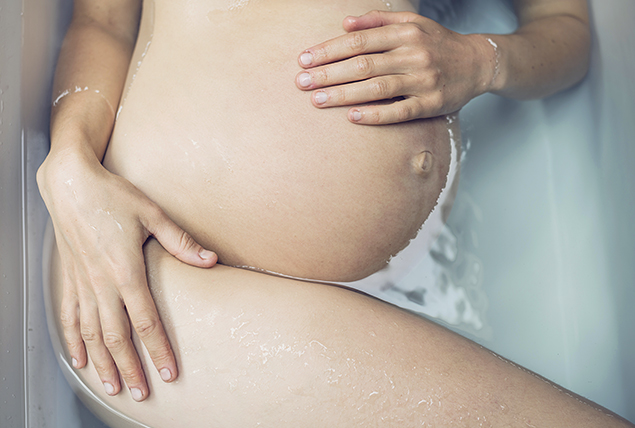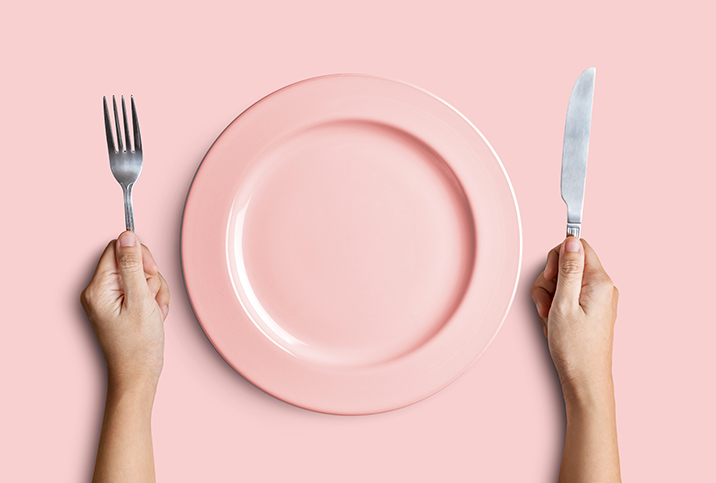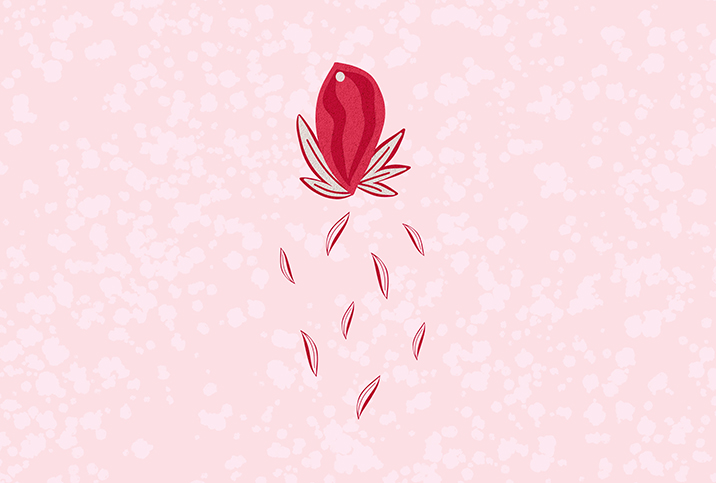Alternative Birthing Methods That Could Harm You or Your Baby

Key Points
- Alternative birthing methods and practices are becoming increasingly popular.
- Lotus births, water births, vaginal seeding and eating the placenta, for example, are being used and requested more often.
- While some alternative practices have their benefits, it's important to know the pros and cons before making a decision.
Whether you're considering a conventional hospital birth or alternative perinatal practices such as a natural home birth, water birth or lotus birth, understand the potential pros and cons.
Doctors and midwives explain the facts about five unconventional but increasingly popular practices that could do more harm than good.
Why is a natural home birth becoming more popular?
In 2021, the rate of home births in the United States reached its highest since 1990, according to the Centers for Disease Control and Prevention (CDC). This marked a 12 percent increase from 2020, following a 22 percent increase from 2019 to 2020.
Although the pandemic contributed significantly to these figures, the rate has risen since 2004, increasing by 77 percent between 2004 and 2017, a 2019 report indicated.
That's likely, in part, a response to the United States' maternal morbidity and mortality rate, which surpasses any other industrialized nation. Compared to their parents, women in America today are 50 percent more likely to die from pregnancy or birth-related complications, the 2019 report suggested.
Most of these deaths are preventable and attributable to a lack of access to proper care. Still, the figures instill doubt and mistrust.
That's compounded by other factors, including perceived mistreatment by healthcare providers and the country's relatively high cesarean section (C-section) rate, which is about double what the World Health Organization (WHO) estimates are necessary, a 2019 report suggested.
"Birth has become very medicalized and commodified, and I think that people are looking for ways to regain their autonomy, to regain the understanding that birth is physiological and not pathological," said Nikia Grayson, D.N.P., C.N.M., a nurse, midwife and chief clinical officer for Choices Center for Reproductive Health in Memphis, Tennessee.
The focus for many providers has become solely on having a healthy baby rather than ensuring the baby and mother's well-being. Providers often don't clearly explain why they believe specific interventions are needed, which can leave mothers feeling uninformed and unempowered.
"The over-medicalization of childbirth has made it difficult for some people, and now they're looking for ways to find a reclamation and understanding of how to really trust their bodies and themselves," Grayson said.
However, as with hospital births, there are pros and cons of natural birth (or birth without anesthesia), home births and other alternative practices.
Recommended
- Having an Orgasm During Childbirth? Yes, It's Real: It's rare, but some women experience the most powerful climax of their lives.
- With Home Birth, Preparation Is Key: Forgoing a hospital setting is fine for many women, but having a plan in place is vital.
- Health Professionals Weigh In on Sex After Giving Birth: Doctors recommend waiting some time before having intercourse again, so listen to your body.
What are potentially dangerous birthing practices?
A new clinical report published in Pediatrics, the peer-reviewed journal of the American Academy of Pediatrics, examined seven perinatal trends.
The researchers found that even if some practices might be beneficial, they could result in medical emergencies and other serious complications. Here's the lowdown on five of them.
Lotus birth
What is a lotus birth? The practice involves leaving the umbilical cord and placenta attached to a newborn until the cord detaches from the belly button on its own, said Ila Dayananda, M.D., an OB-GYN and the chief medical officer at Oula Health in New York City.
Proponents of lotus birth say it can provide increased blood flow and nutrients to the newborn and reduce the risk of infection, said Jenna Flanagan, M.D., an OB-GYN and medical advisor at Flo, a women's health app in Somerville, Massachusetts.
There's no scientific evidence to support the claims of a lotus birth's benefits.
However, research has shown significant risks of lotus birth, including a heightened susceptibility to infection, according to the report.
That's because the placenta and umbilical cord begin to die immediately after the placenta detaches from the uterine wall, and decaying tissue is a breeding ground for harmful bacteria, which can lead to a bacterial infection, Flanagan said.
In rare cases, the practice can even result in life-threatening sepsis.
A safer alternative is delayed cord clamping, which is a widely accepted norm in the medical community, according to Dayananda.
"This is when the umbilical cord is cut between 30 and 60 seconds after birth rather than the typical 15 to 20," she said.
Water birth
Having a water birth at home is relatively common; some hospitals offer tubs or pools. The potential benefits of water birth include increased comfort and relaxation and faster labor, said Meleen Chuang, M.D., a clinical associate professor in the Department of Obstetrics and Gynecology at Family Health Centers at NYU Langone in New York City.
The warm water helps to soften perineal tissue to reduce the risk of tearing, though warm compresses, mineral oil and gentle stretching can produce a similar benefit, Chuang said. It's a popular choice for people with low-risk pregnancies who want to avoid pain medications.
However, there are disadvantages of water birth, and it isn't suitable for everyone, Grayson said.
If the pool isn't properly sterilized, there's a high risk of infection for the mother and baby. It can be challenging to monitor the baby's well-being or assist the mother in case of an emergency. There's a risk that the baby may take their first breath underwater, inhaling water instead of air, which could lead to drowning.
The ACOG doesn't recommend water birth during the second stage of labor, from when the cervix is fully dilated to when the baby is born, Flanagan said.
Speak to your doctor to learn more about how a water birth could look for you.
Eating the placenta
Placentophagy, or eating the placenta, has become popular since celebrities—Padma Lakshmi, Alicia Silverstone and the Kardashians—ate the placenta for its purported health benefits.
Advocates believe the practice can improve mood, ward off postpartum depression, increase energy levels and enhance lactation, Chuang said.
"I have seen many women who have the placenta professionally dried and then ingested in capsules," said Leslie Stroud, M.S.N., R.N., the program director of nurse-midwifery at Case Western Reserve University in Cleveland. "I also saw one person bring a blender to the delivery room with the intention of making a 'placenta shake' to drink. Once blended, the placenta did not seem as appetizing as anticipated and they abandoned thoughts of drinking it."
Regardless of the ingestion method, there's no reliable evidence of placenta-eating benefits, experts say, but there are clear risks.
"If the placenta is stored improperly or is not cooked through, bacteria can grow and cause an illness similar to any uncooked tissue/meat—like raw chicken, eggs, beef with salmonella, B. cereus and other bacteria—that can lead to moderate or severe illness that could impact post-birth recovery, breast milk supply, bonding with the newborn, etcetera," Flanagan said.
Although freeze-drying and encapsulating the placenta is likely much safer, it isn't risk-free.
Some people could have an allergic reaction, which could result in itching, rash or difficulty breathing, Chuang said. The Pediatrics report identified one instance of a newborn who became ill from bacteria in their parent's placenta capsules, a 2016 report stated.
Vaginal seeding
One of the benefits of vaginal birth is that when a baby is delivered, they come in contact with the mother's vaginal microbiome, which is populated with beneficial bacteria, Grayson said. This flora can help the baby build their immune system and prevent disease.
What is vaginal seeding? When a baby is born via C-section, they don't naturally accumulate those helpful vaginal bacteria, Grayson said. The practice involves rubbing vaginal secretions onto the baby after birth to replicate natural exposure.
Some research indicates there may be benefits, but most evidence is anecdotal. ACOG and most providers discourage the practice outside of a research setting due to the variety of potential risks.
"While the birthing parent could have good bacteria that could benefit the baby, they could also have harmful bacteria," Grayson said.
These harmful bacteria could include group beta strep or a sexually transmitted infection (STI) or disease (STD) such as chlamydia or gonorrhea, Chuang said. Getting tested beforehand can help mitigate such risks. But breastfeeding, which also provides a baby with beneficial flora, is a safer and more evidence-based method.
Skipping or delaying the hepatitis B vaccine
The CDC recommends infants get their first dose of the hepatitis B vaccine within 24 hours of birth, but an increasing number of parents are choosing to skip or delay the vaccine, according to the Pediatrics report.
This is usually because parents believe their baby's risk of infection is low, and they want their child to be older before their first vaccination, Chuang said. Unfortunately, it can leave a child vulnerable and at risk of under-immunization, a 2018 report suggested.
Parents may be concerned about potential complications, though ample research indicates the vaccine's benefits far outweigh the exceedingly low risk of serious side effects, according to the CDC.
This virus can live outside the body for up to a week, including on surfaces such as playground equipment, water bottles and desks. That means even people who don't engage in risky behaviors like unprotected sex with an infected person or using contaminated needles, syringes, medical equipment or razors can still contract the virus.
Nearly one-third of people infected with hepatitis B have no identifiable risk factors, according to a 2022 report.
The condition is particularly harmful to children as it tends to be asymptomatic, meaning families may not realize a child is infected for some time.
Without treatment, the infection, which causes severe liver inflammation, can lead to long-term issues such as liver damage, cirrhosis or cancer, Chuang said.
The bottom line
While some alternative practices could be beneficial, it's important to consult with healthcare professionals and make an informed decision based on your needs and circumstances.
Many providers are open to discussing alternative practices, but it's equally important to be open to their suggestions, even if those include abstaining from specific trends that could prove dangerous for you or your child.


















